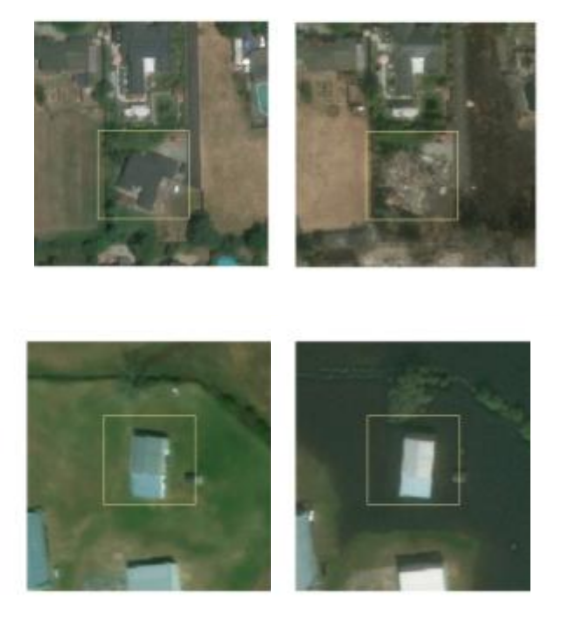Blogue
AI – a potential helping hand for humanitarian aid

 For the training of artificial intelligence tools developed by HEC Montréal and Polytechnique Montréal, images of disasters used - including those generated by the passage of Hurricane Matthew in the West Indies in 2016. (PHOTO : Haiti Hit by Hurricane Matthew, by United Nations Photo, lisence CC BY-NC-ND 2.0)
For the training of artificial intelligence tools developed by HEC Montréal and Polytechnique Montréal, images of disasters used - including those generated by the passage of Hurricane Matthew in the West Indies in 2016. (PHOTO : Haiti Hit by Hurricane Matthew, by United Nations Photo, lisence CC BY-NC-ND 2.0)
After an earthquake, forest fire, or hurricane, emergency services often rely on satellite images to determine where the most pressing needs exist. It's a job that requires numerous hours of analysis that can even stretch into days. A team from Polytechnique Montréal and HEC Montréal attempted to automate the process using artificial intelligence (AI), and thanks to their efforts, everyone has come a little closer to a solution applicable in the field.
An earthquake in Haiti in January 2010. Australian brush fires in 2019. Hurricanes that sweep regularly across the US. Major landslides and flooding in British Columbia, 2021. When major natural disasters occur, relief is organized with on-site resources seemingly so well - and this, in spite of failing telecommunications and transportation systems.
On-site in the field, multiple strategies are mobilized to assess the extent of damage and to prioritize interventions. In addition to land and aerial surveys, drone surveys are sometimes added, followed by satellite images - provided the weather cooperates, and camera views aren't obscured by clouds or fog.
The problem is, analyzing these images in detail takes days depending on the resources made available to emergency intervention workers. Meanwhile, human lives are at stake on the ground.
Automated learning: supporting emergency services
 Isabelle Bouchard (PHOTO : Isabelle Bouchard)
|
As part of her master's work in computer engineering, Isabelle Bouchard sought to facilitate the work of humanitarian aid teams by automating image analysis using "machine learning" - the most commonly-used form of artificial intelligence.
The goal: to present the learning algorithm with hundreds of thousands of satellite photographs captured before and after a disaster, so that AI can identify what has changed. Once trained, such a tool could do the job autonomously and identify, for example, the areas of a region where buildings have been most affected by a hurricane, or where access has become difficult following a major flood.
"Until now, other researchers and teams have trained algorithms, but they validated the work on the same natural disasters that were used for training," explains the biomedical engineer by training. “These algorithms don't work in the context of humanitarian aid, where the images are coming from a new and novel part of the world.”
The composition of aerial images varies considerably from one region of the world to another, she notes. Building shapes, or even roof colours are just some of the elements that could potentially interfere with an algorithm's analysis of a given situation. “What people in the field need, is an algorithm that can generalize its task, and could be able to function despite regional subtleties,” she says.
Under the co-supervision of Professor Marie-Ève Rancourt, (Department of Operations and Logistics Management at HEC Montréal) and Professor Daniel Aloise (Department of Computer Engineering and Software Engineering at Polytechnique Montréal), Isabelle Bouchard trained an algorithm on a data set from 18 global disasters which occured between 2011 and 2019.
Within these images were those showing "before / after" shots of hurricanes or forest fires. The aftermath of earthquakes, floods, and even volcanic eruptions were also used to train the algorithm. The images were part of an “open” dataset made available to research teams by the Defense Innovation Unit.
A glance at... automated learning using images of disasters |
|
Bouchard – who now holds a master's degree in computer engineering - first tested existing algorithms on her previously annotated datasets, using 17 of the 18 natural disaster event datasets to train her algorithm. She then later tested the tool on images of the eighteenth disaster event. “We quickly realized that our sample of 17 disaster sets was too small for AI learning to work out how to generalize data to a different disaster,” she says. “Even though we had between 5,000 and 35,000 images per event, there was low image diversity for each disaster, so the algorithm had difficultly applying its learning to a disaster that took place elsewhere in the world." To this problem is compounded another: some disasters (such as fires or hurricanes) will directly affect buildings, while others (such as floods) have damage that’s confined to the periphery. A generalist AI tool should be able to discriminate between various forms of damage. The research team then adopted a strategy where 10 to 500 images of a “new” disaster would be annotated, then presented to a pretrained algorithm so that it learned to recognize a region's specific features - this is a technique known as "transfer learning." “It was important for us to reproduce the emergency context by reducing image analysis time as much as possible,” explains Isabelle Bouchard. "The problem is, that manually annotating these images is time consuming and resource intensive. " For this reason, the joint HEC Montréal - Polytechnique Montréal team also tested a strategy without manual image annotations. The AI algorhithm was left unsupervised, and itself identified photo parameters of what should and shouldn't be considered during its analysis of damage. "For the moment, results aren't conclusive, but this method of working would eventually have to be the solution. Access to even more datasets is really the biggest limiting factor here," explained Isabelle Bouchard. Bouchard also notes access to more geographically diverse images is needed. What does that mean? Well, for example, none of the databases available to researchers have images that show snow. "It's not clear how the algorithm would react in that kind of situation," she says. If such annotated datasets ever become available, the committed researcher believes that AI could speed up humanitarian aid response time. “If the algorithm becomes sufficiently generalized and capable of analyzing images for all types of disasters, we could analyze images that show the aftermath of disasters within mere hours of getting them." |






Comments
Commenter
* champs obligatoire